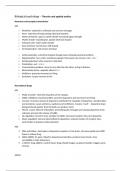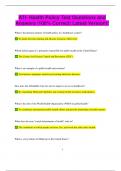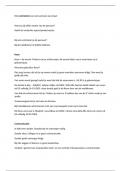Summary
Summary - Unit 3 - Biological psychology
- Module
- Institution
Summary notes for Alevel Edexcel biological psychology. Notes consist of A01, A02, A03 and Ao3CA points. Description of point, evidence for point, evaluation and evaluation of the counterargument. Summary points include required studies and led to me achieving an A in Alevel Psychology. Content i...
[Show more]












